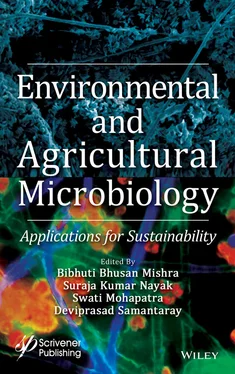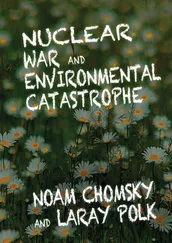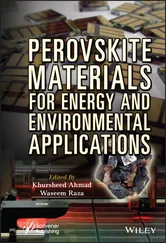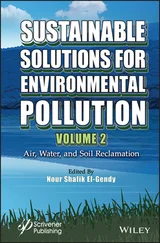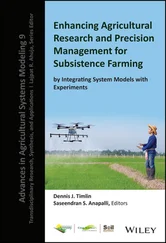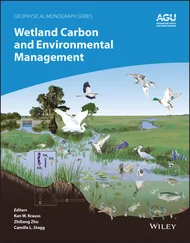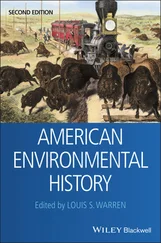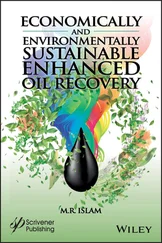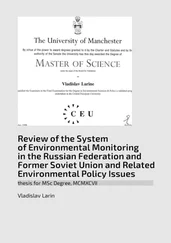The editors express their sincere gratitude to all contributors for their excellent cooperation, critical thoughts and contributions that helped to complete this timely edited volume. We also sincerely thank Scrivener Publishing for providing us with a platform to publish this book. Last but not least, we wish that the current and upcoming scientific generations will use the knowledge presented herein for the benefit and development of society. We will definitely appreciate any comments on the book for future consideration.
Bibhuti Bhusan MishraSuraja Kumar NayakSwati MohapatraDeviprasad SamantarayJune 2021
Part 1 MICROBIAL BIOREMEDIATION AND BIOPOLYMER TECHNOLOGY
1
A Recent Perspective on Bioremediation of Agrochemicals by Microalgae: Aspects and Strategies
Prithu Baruah and Neha Chaurasia*
Department of Biotechnology and Bioinformatics, North-Eastern Hill University, Shillong, India
Abstract
With the increasing world’s population, enhancement of crop production has become a major target for mankind survival. This leads to extensive use of agrochemicals which has revolutionized the entire pest control system. However, due to their uncontrolled use, the equilibrium between their beneficial effects and harmful consequences has been compromised which lead to severe environmental havoc. To combat their hazardous influences, several remediation methods such as adsorption and ultrasonic irradiation have been developed. But unfortunately, most of them are not cost-effective and environment-friendly. As a result, bioremediation has become a potential alternative to these remediation methods being less expensive and eco-friendly. Microalgae have recently received sufficient attention as a bioremediation candidate due to their cheap nutritional requirements (solar light and CO 2) and versatile metabolic activities. The microalgae-based remediation technologies are ecologically more comprehensive and can be integrated with several other technologies such as biofuel production and carbon mitigation. Regardless of these conveniences, a critical scrutiny of the current status of the technology is required to get an in-depth insight into the applicability of microalgae for remediation of pollutants. The present article is an attempt to provide a crucial look into the microalgae-based removal of agricultural pollutants and an outline of its mechanistic perspectives. Also, molecular aspects of bioremediation by microalgae have been discussed to provide a better understanding of its remediation capabilities.
Keywords :Microalgae, phycoremediation, agrochemicals, metabolism, agriculture, fertilizers, pesticides, environmental pollution
The human population is constantly increasing at a fast rate and might reach around 9.7 billion people by 2050 [1]. To satisfy the food requirements of this enormous population, an enhancement in crop production is needed which open doors for the use of various agrochemicals. Agrochemicals (fertilizers and pesticides) are the group of chemicals used in agricultural practices to improve crop yield. Limited availability of macronutrients such as nitrogen, phosphorus, and potassium may result in poor growth of the crop. Thus, commercial fertilizers enriched with these ingredients may be applied to meet the demand of the essential elements. But plants can absorb only a limited amount of these nutrients and the excess fertilizer may be washed down along with the rain into water bodies and thereby causing contamination of the same [2].
Thus, uncontrolled and excessive use of fertilizers (e.g., phosphate fertilizer) may result in eutrophication of canals and reservoirs [3, 4]. In addition to chemical fertilizers, another chemical extensively used in agricultural activities is pesticides. These substances are utilized to control the infestations by crop destroying organisms referred to as pest and thereby enhancing agricultural productivity [5]. Although these agrochemicals are used to benefit humans, they have a hazardous impact on the environment [6]. Thus, with the use of several million tons of agrochemicals every year, the agricultural sector has been considered to be a major source of environmental pollution [7].
Among the various agrochemicals used in modern agricultural practice, pesticide and its residues pose a serious threat to environmental health and stability [8]. As a result, environmental pollution due to pesticide has become a major global concern. Pesticides can be defined as substances (or a mixture of substances) developed to repel or mitigate pests [9]. Pesticides include a wide array of compounds intended to reduce crop destroying agents such as insects, weeds, fungi, and rodents. These pesticides vary in their physical as well as chemical properties, and hence, it is important to classify them which make their study convenient. Although there are various ways of pesticide classification, the one based on their chemical composition are the most used one. This type of classification provides a proper correlation between structural features, activity, toxicity, and degradation mechanisms, among different members [5]. Based on chemical composition, pesticides have been classified into four major classes, namely, organochlorines, organophosphorus, carbamates, and pyrethroids [10]. Table 1.1shows the chemical composition and general characteristics of important pesticides [11, 12].
Table 1.1 Chemical composition and general characteristics of different pesticide groups [11, 12].
| Group |
Chemical Composition |
General Characteristics |
Example |
| Organochlorines |
Composed of C, H, Cl, and sometimes “O” is also present. |
Lipid soluble, accumulation in fat rich animal tissue, persistent for a longer period, nonpolar in nature. |
Lindane, endosulfan, mirex, DDT |
| Organophosphate |
Phosphorus atom occupies central position within the molecule. They may be heterocyclic, cyclic, and aliphatic. |
Shows solubility in water and organic solvents, low persistence compared to organochlorines, the central nervous system gets affected by these compounds. |
Diazinon, methyl parathion, malathion |
| Carbamates |
Chemical structure is similar to a plant alkaloid produced by Physostigma venenosum . |
Derived from carbamate acid; have high vertebrate toxicity; less persistent. |
Carbaryl, sevin |
| Pyrethroids |
Chemical structure is based on pyrethrin obtained from Chrysanthemum cinerariifolium . |
Affect the nervous system; are less persistent compared to other pesticides. |
Pyrethrins |
Although pesticides benefit human by enhancing agricultural productivity, they adversely affect human beings as well as other non-target organisms (explained in details in Section 1.2). Thus, remediation of these anthropogenic compounds is highly essential. Scientists have developed several physical and chemical remediation methods such as adsorption, oxidation, ozonation, nanofiltration, and membrane filtration ultrasonic irradiation for pesticide elimination from the environmental matrices and thereby minimizing their hazardous influences [13, 14]. But unfortunately, most of these methods are not environment-friendly and the cost associated with them is very high. As such, there is a requirement of an alternative technology devoid of these limitations. Bioremediation being inexpensive and eco-friendly proves itself as a potential replacement to various physical and chemical remediation methods. Earlier researchers have focused mainly on bioremediation using fungal and bacterial strains [15]. But recently, microalgae have received sufficient attention as an efficient bioremediation candidate due to their versatile metabolic activities, low-cost nutritional requirements (solar light and CO 2), and ability to survive in different environmental conditions [13]. The aim of this article is to summarize and evaluate the various aspects of bioremediation of pesticides using microalgae with attention on microalgal species involved, strategies, molecular basis, and factor affecting the process.
Читать дальше
